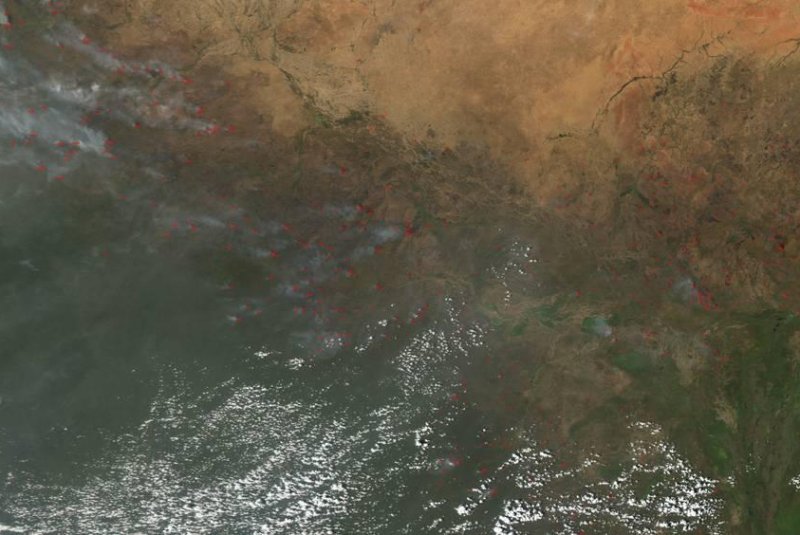PASADENA, Calif., Aug. 6 (UPI) -- In any given year, half of all fires on Earth burned in Africa. Most are set by farmers to promote agricultural productivity and to clear land for planting.
But as a new study by NASA researchers shows, the fires are having distinct effects on the continent's weather. Smoke from Africa's agricultural fires suppress rain cloud formation and leads to less precipitation during the dry season.















